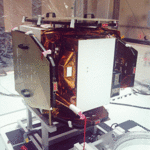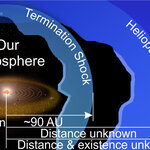Aerospace

The Multi-Mode Sensor Seeker (MMSS), a sensor which is a mix of high-definition cameras, mid-wave infrared sensors and laser-radar (LADAR) technology, will start airborne tests this summer. It will be placed on a robotic helicopter called Fire Scout and carry advanced automatic target recognition software, so sensor prototype will allow Fire Scout to autonomously identify small boats on the water, reducing the workload of sailors operating it from control stations aboard Navy ships.
Look out pirates. You're now that much easier to find.
Navy-developed target recognition algorithms…

Supersonic passenger jets are so 1970s. The Concorde has been gone for almost 10 years and most people don't miss it. But its fundamental concept - people want to get places faster - has not gone away.
Now an MIT researcher says he has come up with a concept that may solve many of the problems that grounded the Concorde, like expensive tickets, high fuel costs, limited seating and noise disruption from the jet’s sonic boom. Qiqi Wang, an assistant professor of aeronautics and astronautics, says the solution, in principle, is simple, going back to the earliest days of flight: Instead of…

In 1957, when the USSR launched Sputnik, it began a new era in the Cold War. The Race to Space. Senator Lyndon Johnson worried the commies could rain nuclear bombs down on us from the high ground, making him the perfect guy to run NASA and because it was a military concern it got funded. Only later it became a human exploration issue and much later became a science one.
Since then, The Race To X argument is conveniently trotted out for whatever new plan a special interest has to get some taxpayer funding. Last year, Nobel Laureate and Energy Secretary Dr. Steven Chu said…

Calliope integration and testing is on hold until Spring break, possibly until Summer. This is driven by two factors: my new job has me short on time, and InterOrbital's deadlines have removed a strong time pressure. It's a good situation-- it's always better to have more time.
One aspect of my new job is presenting mission scenarios and case studies from Mission Operations. I posted a key trade in my science blog, looking at explosive bolts versus springs from a risk point of view. In retrospect, this column-- being about crunchy engineering topics-- may have been a…

In the midst of CNN's non-stop coverage of a deceased singer whose biggest career hit was a cover of a Dolly Parton song, there may be a ray of rational sunlight shining down on a person worthy of our time; an accomplished military veteran, test pilot, Mercury astronaut and Senator named John Glenn. 50 years ago the 40-year-old Marine lieutenant sat atop a building-sized rocket stuffed with solid propellant and left the confines of Earth - backwards.
He wasn't the first. He didn't go on to other space programs like Gus Grissom and Alan Shepard, who flew before him - instead, he left the…

It's Valentine's Day and the wonders of nature are getting in on the act. Luckily, ESA was there to capture the memories.
Here, for your enjoyment, are the numerous ways the cosmos and the Earth hearts you. If you want to see their slideshow with music, go here. If you want all of the science of Valentine's Day, go hereProba image of Tupai Island, French Polynesia. Credit: ESA
Sebkha Te-n-Dghamcha depression in Mauritania. Credit:ESA
Solar coronal mass ejection. Credit: ESA/NASA
South Aral Sea Central Asia. Credit: USGS
The Nile Delta. Credit: ESA/NASA
Eben Atoll Marshall…
While I've been strangely silent, the space industry is surging ahead. I have, off the record, been told of small companies looking to invest $10s of millions into launchers, of new picosatellite designs (like Cubesat and Tubesat) being bandied about, of a possible new East Coast space port. NASA is publically funding multiple potential launch providers.
It is a very good time to be an early adopter, as I mentioned to Wes of Fluid&Reason. They're also working on a picosatellite, in their case to investigate propulsion systems. Prior picosatellites have tested…

Hey, you got simulation in my roleplay! Hey, you got roleplay in my simulation! Wait, it's two great tastes that taste great together!
Thus my students surprised me when they tossed in a role-based stance into what I thought was a straightforward systems engineering analysis. Herein lies the tale.
Background: I'm teaching a course in space mission operations that focuses heavily on scenario analysis. I presented them with a case where they had to balance risk versus success for a space-borne telescope. In rocket science, risk is never something you can eliminate, no matter how much money or…

NASA's Interstellar Boundary Explorer (IBEX) spacecraft has allowed researchers to measure neutral "alien" particles entering our solar system from interstellar space; a first look at the constituents of the interstellar medium, the matter between star systems, and how they interact with our heliosphere.
The heliosphere, the "bubble" in which our Sun and planets reside, is formed by the interaction between the solar wind, flowing outward from the Sun, and the interstellar medium, which presses up against it. Electrically charged, or ionized, particles cannot penetrate the boundary between…
Since 2011 is nearing its end, you are already sick of those top 10 lists about the best X Of The Year. I'll keep it simple and stick to just one. My favorite photo of 2011 was not taken by me and it wasn't anything elaborate, like Osama Bin Laden getting capped or a science miracle or two kids making out on the street during riots in Vancouver. No, my favorite photo was taken last May, just like the ones of Bin Laden finally getting his virgins (but finding out they are virgin men - namely other terrorists), but it was much quieter.
Stefanie Gordon was flying from La Guardia…